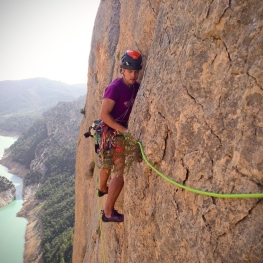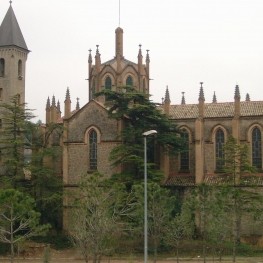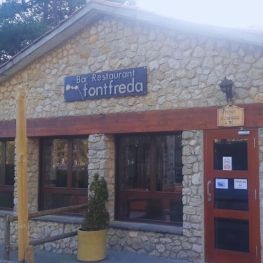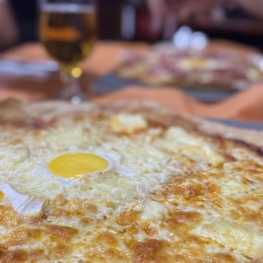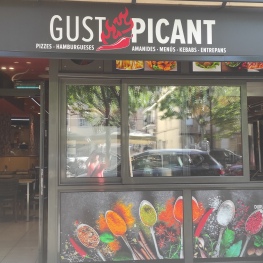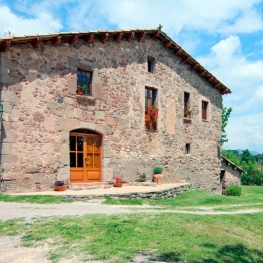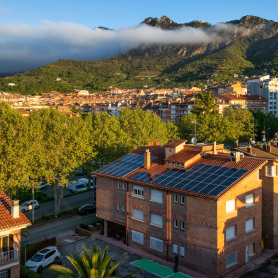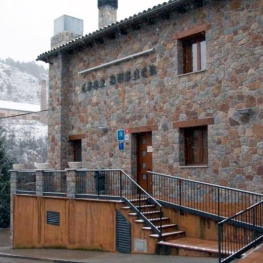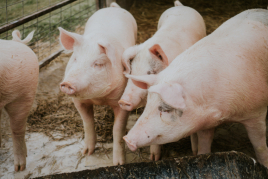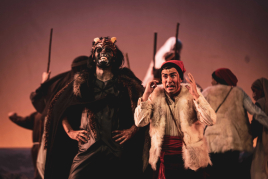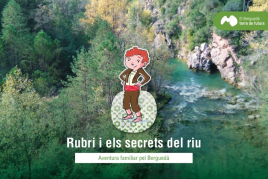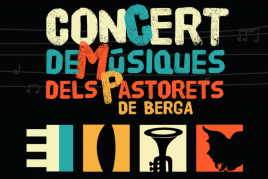Berga during the Civil War
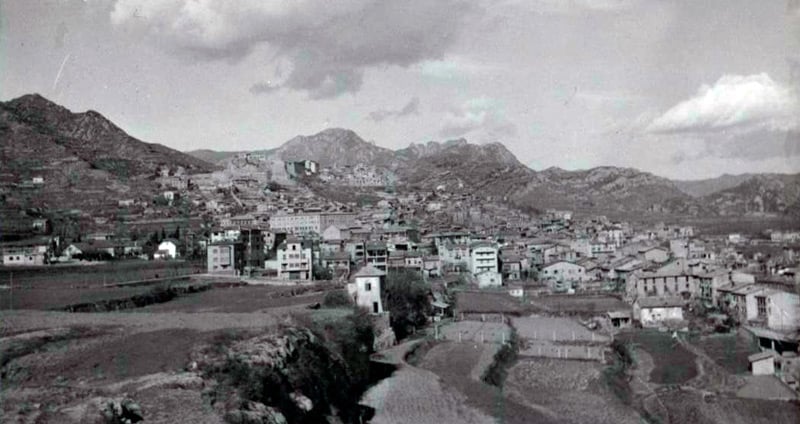
Berga like many other towns in the Central Catalonia were far from the front for a long time and, despite the formation of committees and militias, suffered no war as such until almost the end. The route we propose will find no sign posted on the street, but following signs and readings of each point will not be difficult to imagine how those days were far from the front and days near the end of the war.
You can view or download the tracks of the route that will guide you along the way. Each section of the route is marked with a number, which is represented on the map of the route.
Calle del Roser (1)
 We start the route in the street Roser road junction with Sant Fruitós. The fact start at this point is not by chance. Keep in mind that in 1939 Berga ended at this point and just lay beyond cottages. The way of Roser was therefore one of the suburbs of the town of Berga and the path that led to Solsona and to Barcelona through highway Ribes.
We start the route in the street Roser road junction with Sant Fruitós. The fact start at this point is not by chance. Keep in mind that in 1939 Berga ended at this point and just lay beyond cottages. The way of Roser was therefore one of the suburbs of the town of Berga and the path that led to Solsona and to Barcelona through highway Ribes.
It was therefore one of the points where many young Bergashire marched to the front and also where the 2 February 1939 arrived at Berga Franco 's troops. Barcelona had fallen on January 26 and posteriorment to central Catalonia rose two columns, one towards the area of Vic (which would be occupied the same day Berga) and another to the area of Solsona. On 2 February after a few battles in the mountains of Noet, troops led by General Sagardía entered Berga.
Plaza of the Catalan Countries (2)
 Today it is a place full of life and facilities but in the 30 's in this space we found the Felipó Tower. A fairly large building surrounded by gardens. During the war the tower was occupied by members of the CNT.
Today it is a place full of life and facilities but in the 30 's in this space we found the Felipó Tower. A fairly large building surrounded by gardens. During the war the tower was occupied by members of the CNT.
According to some chronicles of the time and several testimonies, before the escape, the Republican soldiers loaded the boiler dynamite. At the forefront of national army troops were from northern Africa to enter the tower decided to light a fire to keep warm. The result was that part of the tower blew up causing several deaths. Currently these dead are buried in the area of Berga and firefighters who could not be buried within the confines of the cemetery because the Christian religion did not possible.
Sallagossa portal (Plaza de las Fuentes) (3)
 Currently the Plaza de las Fuentes is the entrance to the street City (more) Berga, full of shops and bars space. The portal disappeared when the city of Berga decided to demolish the walls, but when looking at the street entrance is not difficult to imagine its dimensions.
Currently the Plaza de las Fuentes is the entrance to the street City (more) Berga, full of shops and bars space. The portal disappeared when the city of Berga decided to demolish the walls, but when looking at the street entrance is not difficult to imagine its dimensions.
We stopped at this point because it was the natural entrance to the old Berga, Berga medieval and therefore the area where in which at that time more people lived.
At this point we can focus on what life was like during the war in Berga. To do collect the testimony of Valentina Natural Garriga de Gironella, but spent the entire war in Berga. "Berga was far from the battlefront and thus little changed. We could buy food and normal. The thing did not change until the last weeks of 1938 and especially 1939. The Franco army was already at the gates of Catalonia what prompting some foods begin to dwindle. The oil disappeared from our lives and we basically just fed them black peas and porridge. "
 Valentina also gives relevant information from the flight of the Republicans and the entry of Franco. "While some went with tattered clothes and badly shod, the other went into training and almost flawless! Clothes."
Valentina also gives relevant information from the flight of the Republicans and the entry of Franco. "While some went with tattered clothes and badly shod, the other went into training and almost flawless! Clothes."
At this point it is also interesting to look at the building where was located the Civil Guard for years. Currently the building is abandoned but still found on its walls still often painted reminding Joan Vilella, Josep and Josep Bertobillo Doors were tortured and then shot in the Vilada road in 1949 accused of helping the "maquis". On the steps of the Plaza de las Fuentes you can see a plaque in memory of these three Bergashire.
Plaza San Juan (4)
One of the most emblematic spaces Berga. At this point do not hesitate to make a stop at "Cal Negre" a bar that has more than 200 years behind. If this route is done in spring or summer sit quietly on the terrace to enjoy watching the facade of the church of San Juan Romanesque and if looks up observe the front of the bar where you can still see an old coat of arms and the facade of the "Palace of the Peguera" although it is not yet clear that this was his property.
At this point we must talk about one of the most charismatic of the labor movement in Berga. We are talking about Ramon Casals Orriols better known as Ramonet Xic. This was leader and influential member of the CNT and saved the lives of several people rightist and religious, and avoiding the burning of churches in Berga.
 During the Civil War in many parts of the region and the rest of Catalonia churches they were burned and purges were made, however, in Berga was still celebrating Mass. And it was not until the threat of the arrival of people from outside Berga order to burn the Berguedana churches, the "Union of proletarian brothers", founded among others by Ramonet Xic, he decided that something should be done to save them.
During the Civil War in many parts of the region and the rest of Catalonia churches they were burned and purges were made, however, in Berga was still celebrating Mass. And it was not until the threat of the arrival of people from outside Berga order to burn the Berguedana churches, the "Union of proletarian brothers", founded among others by Ramonet Xic, he decided that something should be done to save them.
During 25 and July 26, 1936 all valuables from churches and everything that could be used to heat the hospital and the convent of the Germanetes they were removed. The Virgin of Queralt was lowered at night and kept throughout the war in the basement of city hall, and their crowns hid in the pension fund. Berga and he protected much of its religious heritage and became one of the paradigms within leftist movements.
Four cantons (5)
In this space you can still see a plaque recalls that this was the site of the former town hall of Berga.
 If we look at the costs, by far, we will see the Patronat theater during the war was in the hands of the CNT. We must also explain that in this place the "Columbus" bar was. A bar that alone probably will not suggest anything to us, but if we talk about a song the band Brams entitled Massana and is dedicated to anti - Franco fighter Marcel·lí Massana probably already be a little better known. According tells the song and some witnesses, one day the lieutenant of the Civil Guard found paid his "carajillo" for such Massana.
If we look at the costs, by far, we will see the Patronat theater during the war was in the hands of the CNT. We must also explain that in this place the "Columbus" bar was. A bar that alone probably will not suggest anything to us, but if we talk about a song the band Brams entitled Massana and is dedicated to anti - Franco fighter Marcel·lí Massana probably already be a little better known. According tells the song and some witnesses, one day the lieutenant of the Civil Guard found paid his "carajillo" for such Massana.
Berga Town Hall (6)
 We should note to keep in mind that the city of Berga was not at that location until 1930 when it was designed by the architect Emili Porta. In this space we could talk about many things, but we will focus on the political changes that suffered from 1931 to 1939 when the Civil War ended.
We should note to keep in mind that the city of Berga was not at that location until 1930 when it was designed by the architect Emili Porta. In this space we could talk about many things, but we will focus on the political changes that suffered from 1931 to 1939 when the Civil War ended.
In the elections of April 1931 The Regionalist League took 6 aldermen, Esquerra Republicana also took the remaining 6 and 3 others were divided among other parties. After the League decided to abstain, Josep Badia i Sobrevies (Esquerra Republicana) was elected as mayor, becoming the first Republican mayor of Berga.
 Later, in the elections of 1934, while in most of Spain won the right (CEDA) in Berga left pulled absolute majority becoming mayor Josep Illa. Illa and his government were jailed for supporting Lluís Companys in so -called "events of October 6".
Later, in the elections of 1934, while in most of Spain won the right (CEDA) in Berga left pulled absolute majority becoming mayor Josep Illa. Illa and his government were jailed for supporting Lluís Companys in so -called "events of October 6".
When war broke out in Berga the "Committee of Antifascist Militias" (CNT, UGT union Rabassaires and Libertarian Youth) responsible for managing the policy was formed. It is at these times that many young Bergashire marched to Barcelona under the "Red and Black" column to get to the Catalan capital renamed the column "Land and Freedom". participated in the Battle of Madrid with no very good result and after that in 1937 many of the columns were militarized, many young people decided to go home. Among them Ramonet Xic was deputy mayor Joan Riu in a government formed by ERC and the CNT was.
On February 2 Republican council signed the final act, and the same day the captain Jose Ramon Fernandez Rubiol signed the first act of the Franco council.
Finally it must be remembered that the April 19, 1939 he was shot in the Boot (Montjuïc) Josep Badia i Sobrevies. During those 17 neighbors over Berga they suffered the same fate.
Casino Theatre (7)
 Finally we went to the old Casino, now the Municipal Theatre of Berga. During the war he was in the hands of the UGT. If visiting during the year may not appreciate anything, but if the visit coincides in February (see the schedule), the city of Berga organizes guided Berga Civil War visits and allows entry to the bomb shelter that under the same theater.
Finally we went to the old Casino, now the Municipal Theatre of Berga. During the war he was in the hands of the UGT. If visiting during the year may not appreciate anything, but if the visit coincides in February (see the schedule), the city of Berga organizes guided Berga Civil War visits and allows entry to the bomb shelter that under the same theater.
What to do
Octavi Guia d'Escalada
Casserres (a 10 Km)Meet Octavi Puntas Garcia, a great climbing guide where through ridges, walls…
Centre d'interpretació de l'Església de Cal Pons
Puig-reig (a 14.6 Km)The Interpretation Center of the Colonia Pons Church, through three museum spaces,…
Where to eat
Restaurant Font Freda
Castellar del Riu (a 4 Km)A restaurant offering a wide selection of Catalan dishes, especially notable for…
Bar Restaurant Xato
Gironella (a 8.1 Km)Order pizzas, burgers, tapas... at Xato Bar-Restaurant and we'll deliver them to…
Where to sleep
Hotel Casa Duaner
Guardiola de Berguedà (a 14.9 Km)The Casa Duaner Hotel in Guardiola de Berguedà offers modern facilities, a…





